
TETANUS is not a new disease. Despite being well understood and easily preventable, it continues to pose a threat to the 21st-century population –human and equine alike. Correct and preventative management is no mystery, and owners who implement effective immunisation and reduce the risk with good wound care guard against infection. Despite this, vets still are presented with the disease and each unvaccinated case is a tragedy.
The challenge with preventative medicine in general, and tetanus in particular, is that many horse owners have never witnessed a case and forget that it is a significant risk. The reality of tetanus is a dreadful disease – it is commonly known as lockjaw due to the mouth clamping shut in the later stages, so the poor animal cannot eat or drink. The survival rate is extremely low – even with modern medicine, more than two-thirds of clinical cases of tetanus do not survive.
WHAT IS TETANUS?
TETANUS is caused by toxins that attack the horse’s nervous system. They are released by the causative bacterial infection, known as Clostridium tetani. Spores from these bacteria are widespread and can be found in dust, manure and soil.
If these spores enter a wound with suitable conditions, including damaged tissue and an anaerobic environment (one that lacks oxygen), they will germinate into bacteria, releasing at least three types of deadly toxin to cause tetanus.
Once a tetanus infection takes hold, the deadly toxins migrate along the peripheral nerves to the brain, affecting the nervous system to cause this distressing disease.
This story is from the {{IssueName}} edition of {{MagazineName}}.
Start your 7-day Magzter GOLD free trial to access thousands of curated premium stories, and 9,000+ magazines and newspapers.
Already a subscriber ? Sign In
This story is from the {{IssueName}} edition of {{MagazineName}}.
Start your 7-day Magzter GOLD free trial to access thousands of curated premium stories, and 9,000+ magazines and newspapers.
Already a subscriber? Sign In

Gemirande provides 24-carat magic
Venetia Williams sparkles again in the December Gold Cup and jockey brothers dead-heat
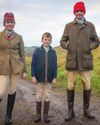
‘Happy hunting, everyone'
“The season for talks, dinners and parties has finally arrived for Tessa Waugh, whose distress about the snags of middle age fades away with some rousing festive spirits

'Monaco deserved this victory
Seemingly destined always to play the bridesmaid’s role, Harrie Smolders’ great partner Monaco finally tops an incidentpacked Rolex grand prix

'It had to end sometime'
The closure of beloved Hampshire saddlery Calcutt Sons is a loss to the hunting and wider equestrian worlds, as Octavia Pollock reports

'You couldn't want for more
The Ludlow's peaceful country makes for a day in \"hunting paradise\"
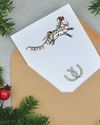
The greatest gift of all
Christmas is fast approaching and while we all like a bit of tinsel, the festive season is also a perfect time for giving to a horse charity. Niki Hinman finds out some of the options

Winter him well
A horse's winter routine can differ dramatically from his summer structure but what’s the knock-on effect? Ellie Hughes asks vets how to optimise routine management for the season
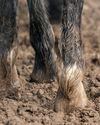
Neat feet
Excellent hoof care is a year-round concern but the winter months present their own problems. Richard Stephenson MRCVS explains the seasonal challenges afoot and how to stay one step ahead
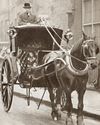
In bygone days
Modern vets have much scientific knowledge behind them, but what about their forebears? Kieran O’Brien MRCVS opens up the world of Victorian vets in London
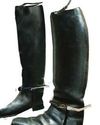
'When I joined the Pony Club it was just two boys and 48 girls'
Pepsi Kohler on being delightfully outnumbered by girls in the Pony Club, a leg-up from a royal and the H&H advert that changed his life